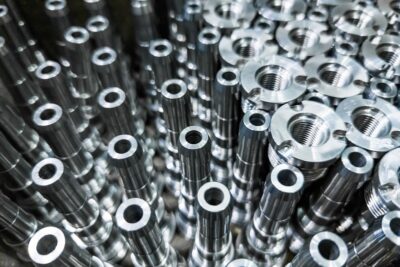Manufacturers must clean their metal, glass, and plastic parts before they can be assembled in an engine or other piece of heavy equipment. Choosing the right cleaning process and detergent can make or break the effectiveness of your parts-cleaning operation.
Before you start the parts-cleaning process, you need to know what type of surface you’re trying to clean (metal, plastic, glass, or other substrate) and the contaminants you need to remove, whether it’s oil, grease, carbon, scale, rust, or loose paint. With your surface and contaminants in mind, choose a wash system that will effectively remove the contaminants without damaging the surface of your parts. You may use a spray cabinet washer, a spray conveyor washer, ultrasonic washer, or a soak tank. From there, Seacole can help you choose the best detergent for your process.
Once you’ve determined parts type, contaminant type, and your washing process and detergent, you’re ready to get started. But choosing the right process and cleaner is only the first step. Time, temperature, and concentration are also the most important factors in how clean you’re able to get your parts.
Factor 1: Temperature
For many contaminants, hotter temperatures are better for effective cleaning, especially when you need to remove stubborn greases such as paraffin. Paraffin responds to heat much better than a cleaning chemical with high alkalinity and low heat. Some manufacturers try to run their parts-cleaning process on a low temperature to save on fuel, but low temperatures rarely get parts as clean as you need them to be.
Factor 2: Time
The more time your parts-cleaning process takes, the longer the spray jets in the machine or the chemicals in your soak tank are in contact with your parts. This increases the chances your parts will be damaged. It’s important to find a balance between time and temperature. Sometimes, you can increase the temperature and detergent to cut down on the time your parts spend in the cleaning process. Many manufacturers try to keep their wash temperatures as low as possible. This can save on fuel costs, but running a lower temperature often requires you to extend the wash cycle.
Regular inspections of your spray washers can make your parts-cleaning operation more efficient. Skim oils off the surface of your wash tank when the machine shuts down to keep your solution as clean as possible. Inspect your spray nozzles for clogs. Often, manufacturers don’t get a high-quality cleaning because 25 percent of their nozzles are clogged. Unclog nozzles regularly so your sprayers have good contact with your parts.
Factor 3: Concentration
Increasing the alkalinity or acidity of the bath increases the contaminants you remove. We recommend manufacturers start with a 3 percent concentration for normal cleaning, then increase the percentage until you get the cleaning quality you want. Test your system to make sure the bath has not become diluted, and log your results so you can predict when you’ll need to add more detergent in the future.
If your wash system includes a rinse tank, be careful how you rinse your parts. If you just open the door and take a hose and rinse the parts with a spray nozzle, your rinse water will run directly into the soak tank and dilute your solution. You can also lose concentration to evaporation if your tank vents to the outdoors. Watch the make-up water gauge to make sure your tank is filled to the right level and do titration to see if evaporation is affecting the concentration of your cleaning solution.
One last tip: Don’t be afraid to change your tank out. Manufacturers often don’t want to spend money on chemicals or getting rid of waste, but skimping on waste removal and tank cleaning results in cleaning your parts in dirty water. Filthy water affects how the wash works and your detergent will not work properly if there are too many dissolved solids in the water.
The chemical solutions experts at Seacole can recommend an appropriate cleaning process and detergent for your parts. We carry aluminum-safe and ferrous metal-safe formulations for most metal parts cleaning operations, but also carry detergents for unique cleaning applications. All of our detergents have rust inhibitors and defoamers built into them.
For help creating a high-quality parts-cleaning system or selecting the right detergent for your application, contact Seacole today.





